Scincidae
There are many excellent lizards in Sri Lanka, and there are also some skinks. Sorry skinks! You guys aren't bad, but even you have to admit that you're just not the most exciting lizards around. Plus, you are in general terrible at sitting still, which is annoying to photographers.
Eutropis look like what you would expect to see were you to look up the word "skink" in an illustrated dictionary. There are several species in Sri Lanka, but they all look about the same. People who spend too much time thinking about skinks sometimes place these in a family called Mabuyidae. Here's a youngster guarding his rock-wall castle in an ecolodge's front yard.

The genus Lankascincus is endemic to Sri Lanka, and consists of about ten species, all with similar body plans but some variation in color, habitat, and scale details. They are all small and wriggly. Sometimes they are placed in a family called Ristellidae. Here's one that sat still for several seconds in a row.
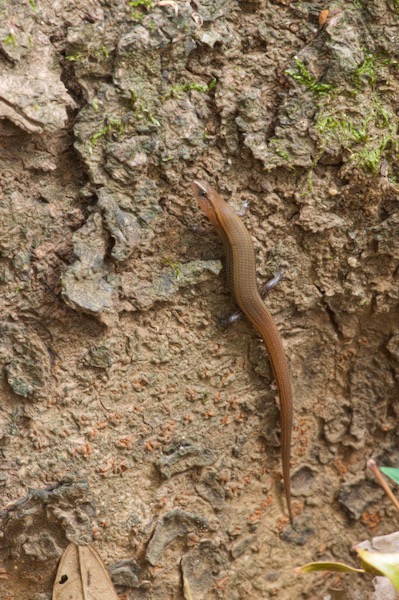
The most interesting skink I saw in Sri Lanka was this nearly legless fellow (this individual is also tailless, but that's another story). My guide Udaya Chanaka dug this up from appropriate habitat on the grounds of his Runakanda Rainforest Conservation Center. I like to think that “Nessia” was named after the Loch Ness Monster, but I doubt it.
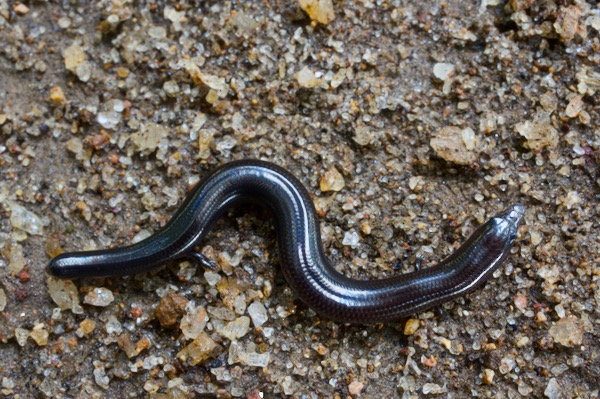
I saw a few more skink species than the ones pictured here, but they didn't sit still long enough to be included.
Gekkonidae
Sri Lanka has many species of Cnemaspis, which can be difficult to distinguish. We found at last three, but I only got decent photos of this one. This photo is from the wall of an ecolodge, but I also saw this species in the forest.
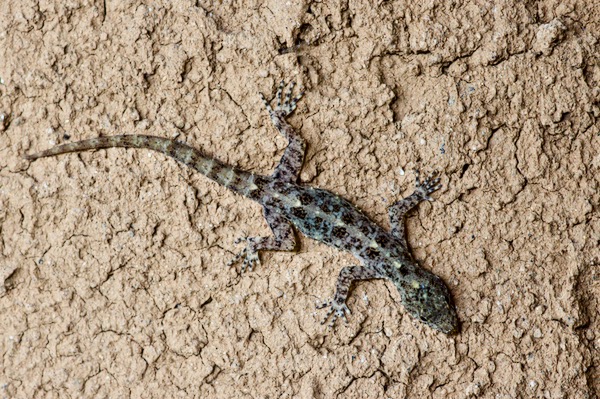
Cyrtodactylus soba clings to huge boulders perched precariously at the edges of sheer, remote precipices. At least, that's where we looked for and found one. Then after we hiked back to the car we found another one on the nearest building.
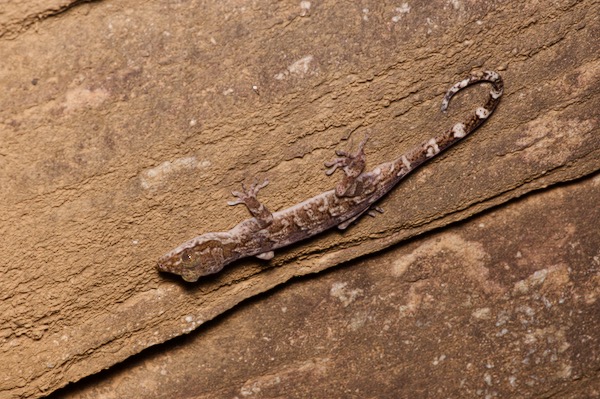
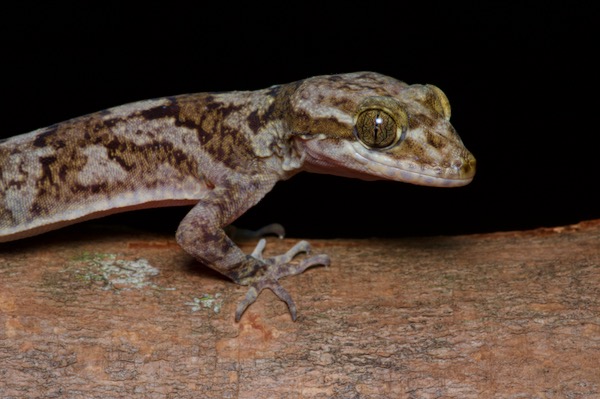
One afternoon we drove 150 km out of our way to visit some caves on a hill where Chanaka had previously found two elusive gecko species. We were lucky and found both species again. The first one was Calodactylodes illingworthorum, which lives in communal groups on the walls of caves. They even lay their eggs communally, with multiple females sticking their eggs onto the same small section of cave wall.
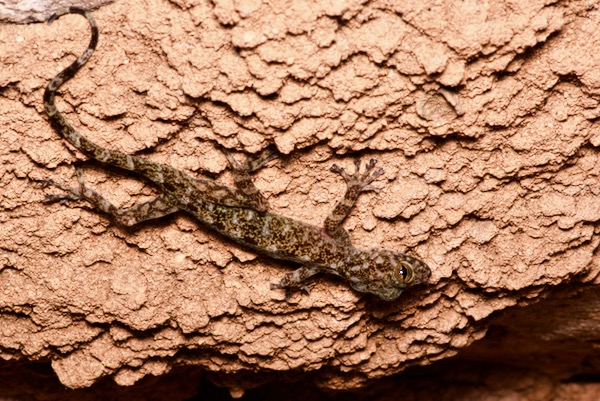
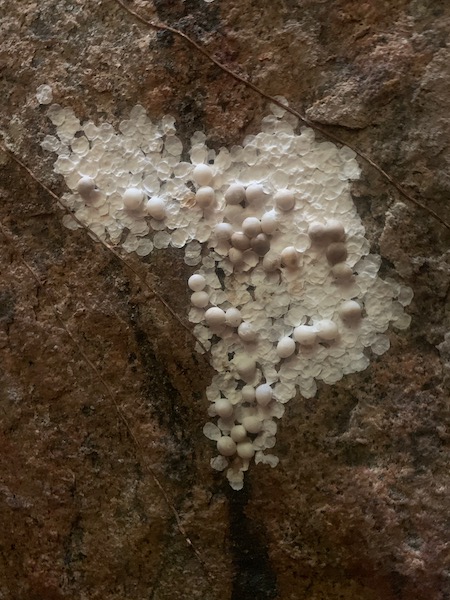
The second interesting gecko in these same caves was Hemidactylus hunae, the largest gecko in Sri Lanka. We saw a couple, but both were sheltering in narrow crevices and turned down our polite offers of fame and fortune on the big screen.
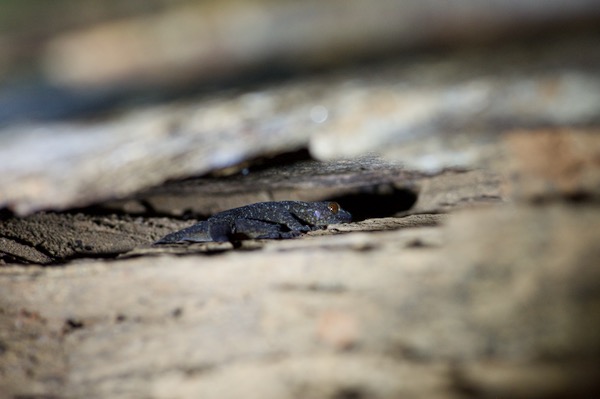
Speaking of Hemidactylus, I saw plenty of what is probably the world's most cosmopolitan gecko, H. frenatus. Most of them were on buildings as is typical of tropical areas everywhere, but this interestingly patterned individual was actually in the forest.
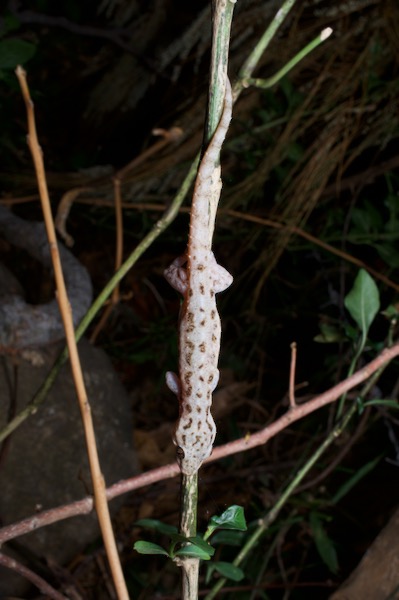
Hemidactylus depressus is a medium-sized to large endemic Sri Lankan gecko that could also be described as a "house gecko" since we saw many individuals on buildings. This particular one was on the roof of a cave, though.
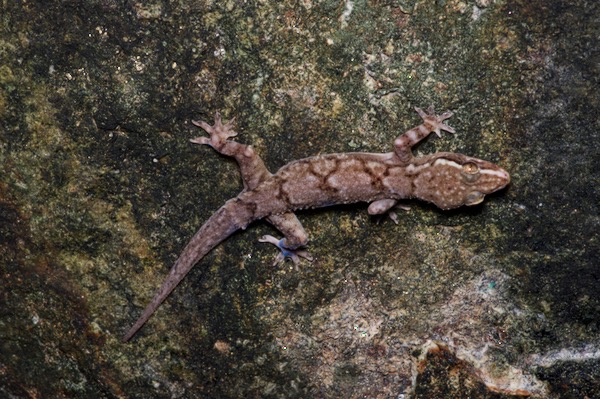
Hemidactylus leschenaultii is another large-ish species, found in dry to intermediate lowland zones in Sri Lanka, southern India, and Pakistan. I only saw them on buildings, and most were way up in the rafters. This was the only conveniently located individual, on the framing for the door into a Yala National Park gate house.
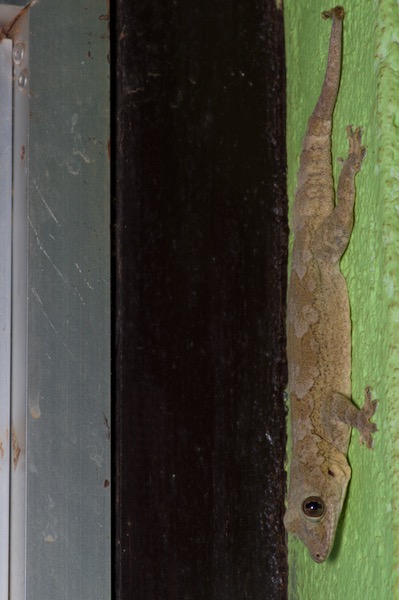
With the possible exception of the crevice-dwelling H. hunae, the most interesting Hemidactylus I saw on this trip was this terrestrial species with a habit of laying its eggs inside termite mounds.
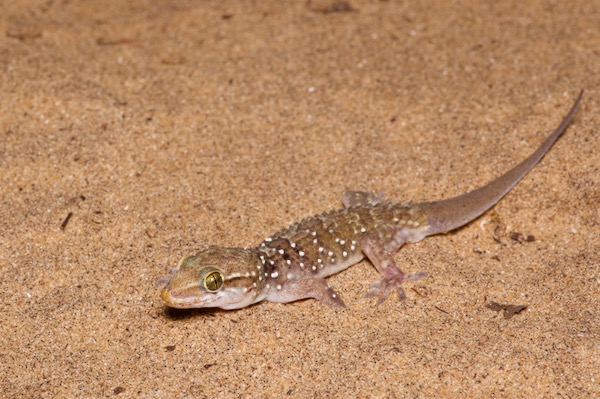
Varanidae
Two species of monitor lizard call Sri Lanka home. Neither is endemic to Sri Lanka.
Bengal Monitors (Varanus bengalensis) are sometimes called Land Monitors in Sri Lanka to contrast them with the other species, Water Monitors (Varanus salvator). We saw many V. bengalensis in the dry lowlands, and a few elsewhere. Here is the first big adult we saw, and also a tiny baby we saw the next day.
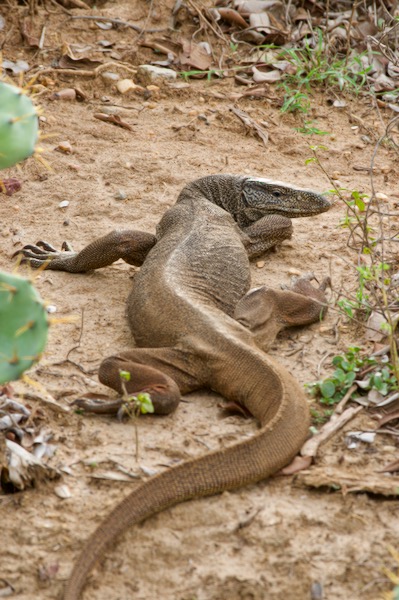
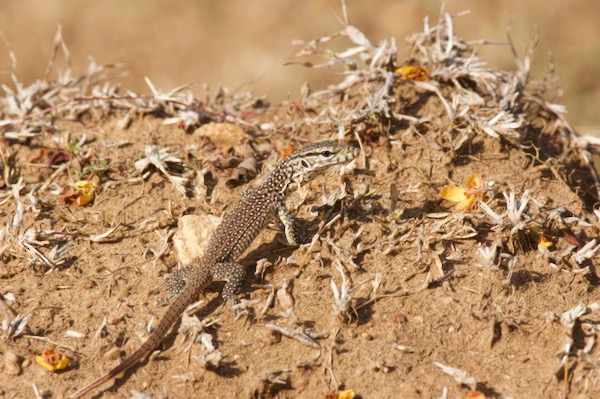
Water Monitors are also reportedly common in the right habitat, but we must not have visited exactly the right habitat, because I only saw one of them, a large individual crossing the road ahead. I took an iPhone photo out the window as evidence.
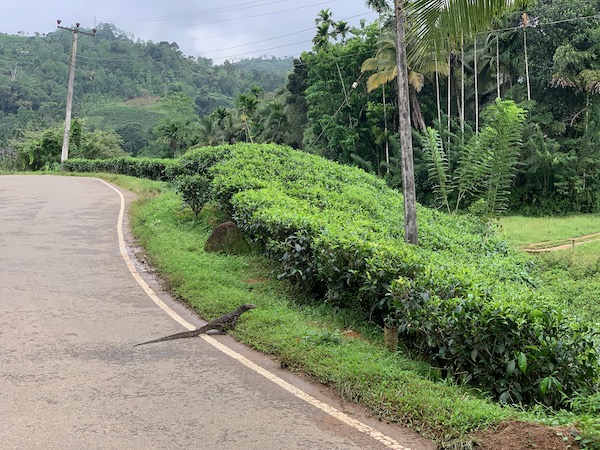
Agamidae
Agamidae is where all the best lizard action happens in Sri Lanka, and we did very well to find 16 of the 20-ish currently known species. (Debate rages or at least simmers about whether the number of Sitana species in Sri Lanka is 1, 2, or 3. Also, the holotype of Salea gularis might be from Sri Lanka or might be from India, and nobody has seen that species since it was described in 1853.)
Sitana are small, fast, terrestrial lizards known for the remarkably large throat flaps (dewlaps) that males will extend to impress other Sitana. I only saw a couple, one of which was this fellow. The dark blue line down his throat is the dewlap in its resting position. He didn't feel the need to extend it while I was watching, perhaps because he knew I wasn't another Sitana.
The population near Yala National Park, where I saw them, was described as a new species called Sitana bahiri in 2015, but was later sunk back into Sitana ponticeriana, at least for now.
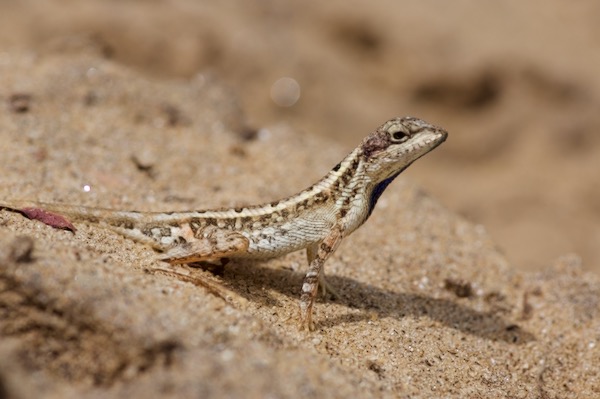
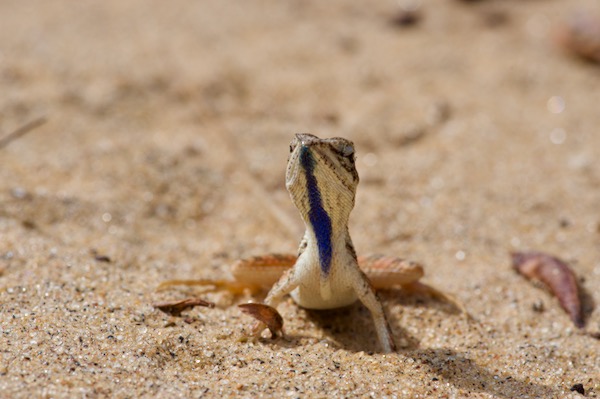
Sitana aren't the only Sri Lankan agamids with impressive dewlaps; they share this distinction with the two species of Kangaroo Lizards (Otocryptis), as well as with another species that I will reveal later on. The only obvious difference between the two species of Otocryptis is the coloration of their dewlaps: Black-spotted Kangaroo Lizards have a big black spot in their dewlaps, and the Sri Lankan Kangaroo Lizards don't. Their two ranges overlap in a small area which we did visit, so I have a bunch of Otocryptis photos that I'll probably never be able to identify to the species level. Fortunately, I saw many of each species in areas far from the overlap zone.
This one has been annoyed into showing his dewlap for us.
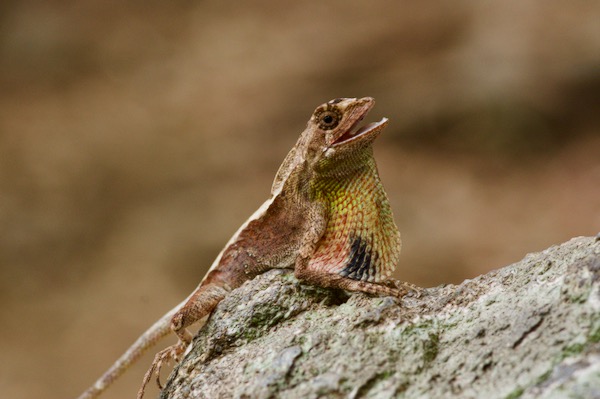
One wonderful aspect of Kangaroo Lizards is that they sleep at night up in the vegetation, hanging onto twigs and leaves and dangling their gangly limbs and tail in crazy poses.
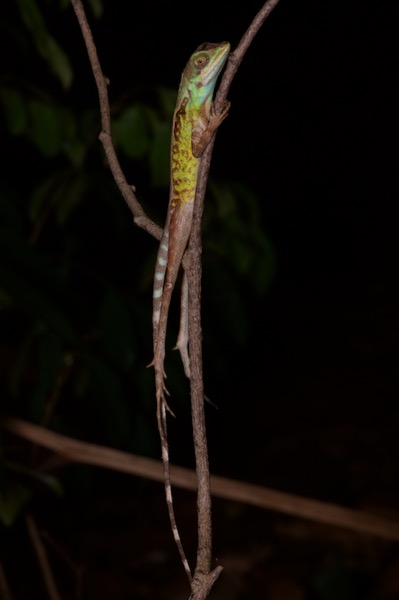
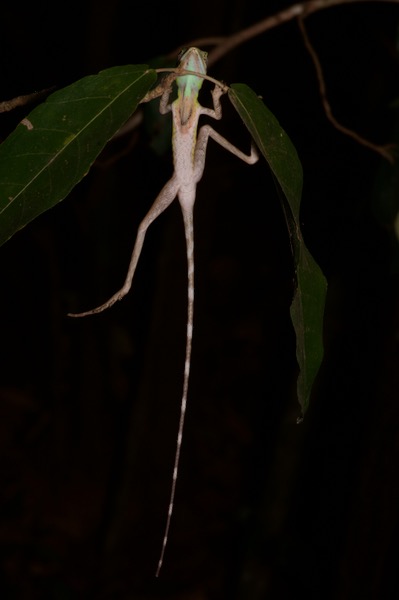
By day they wait in the leaf litter for the right bugs to go by, relying on some fantastic camouflage.
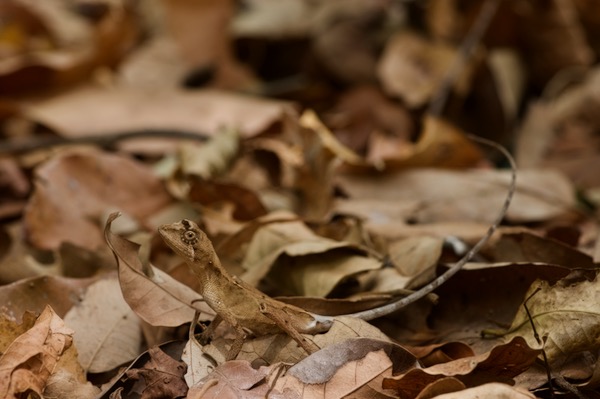
I didn't see any of the other Otocryptis species, O. wiegmanni, in the daytime, but I saw dozens of them at night. Chanaka was greatly amused by my insistence on taking at least one photograph of every individual I saw.
The common English name applied to this species, "Sri Lankan Kangaroo Lizard", has not been thought through carefully, given the existence in Sri Lanka of Otocryptis nigristigma, but what are you gonna do?
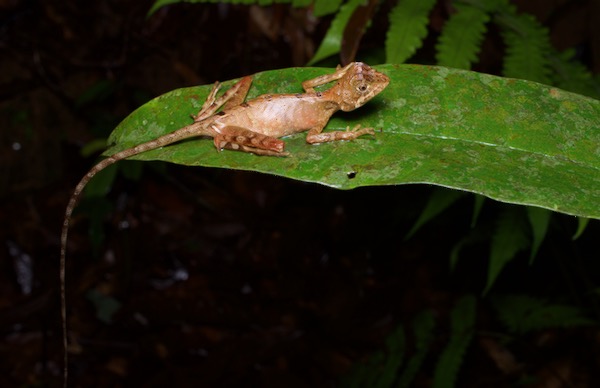
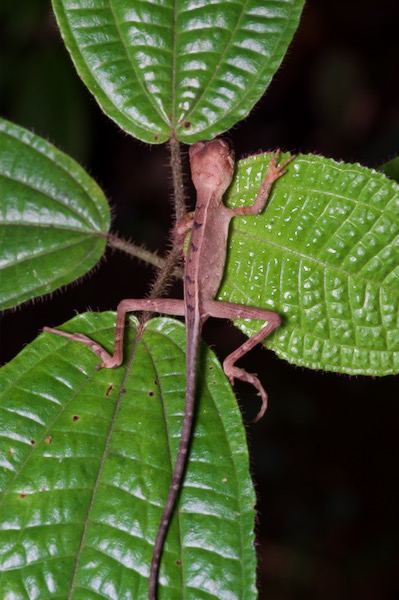
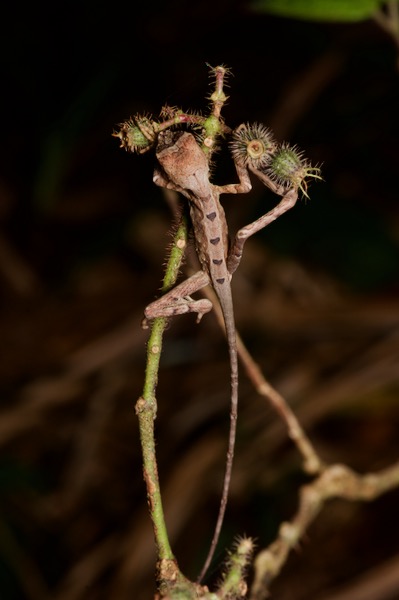
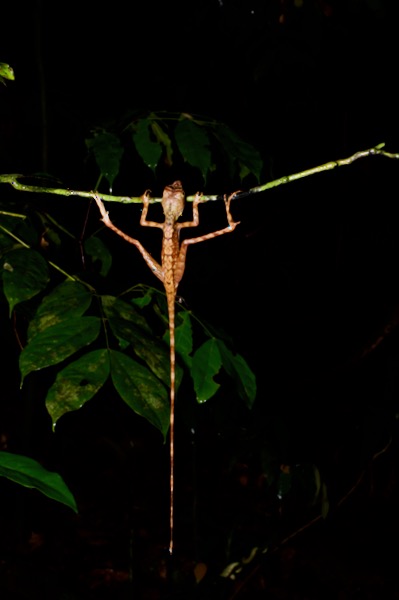
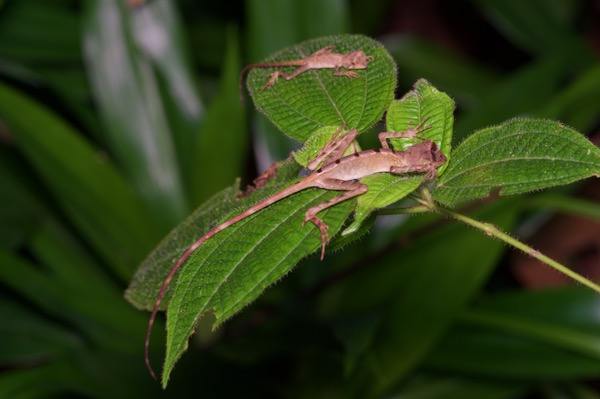
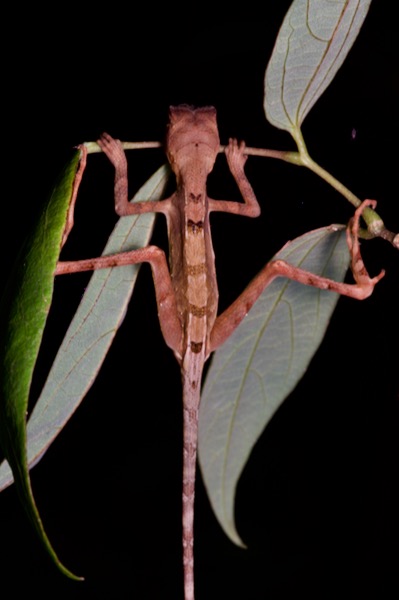
The aptly named Common Garden Lizard showed up in most locations we visited. This species is widespread across Sri Lanka, India, Bhutan, Nepal, Afghanistan, Pakistan, Thailand, Peninsular Malaysia, Vietnam, Hong Kong, etc etc. I suspect it will be split into a bunch of different species some day.
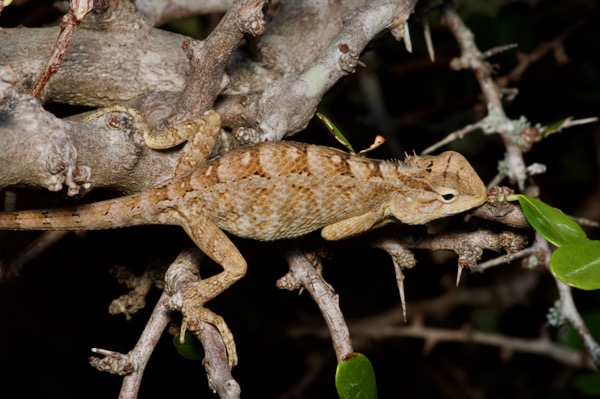
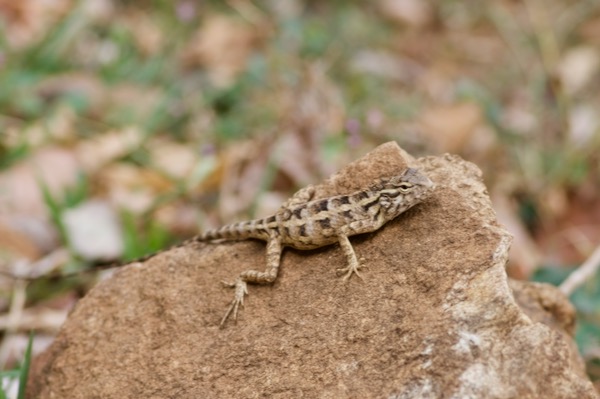
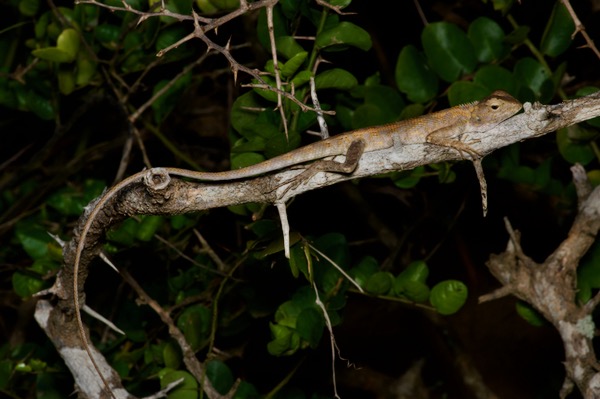
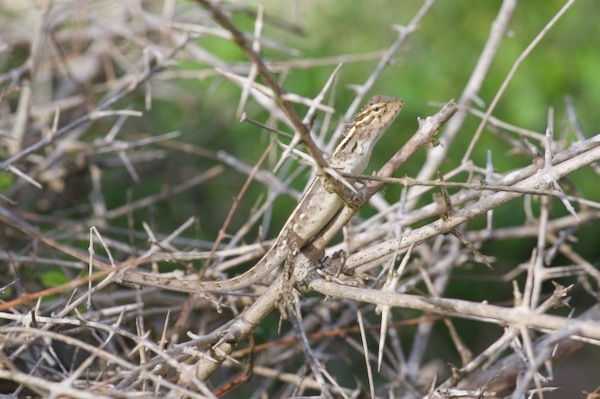
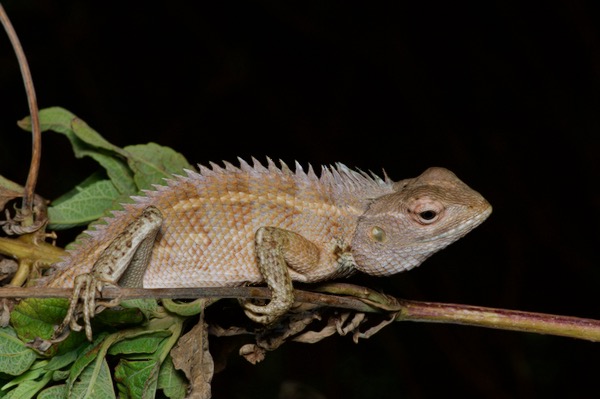
Calotes calotes is the only other Sri Lankan species in this genus that is also found outside of the country (in this case, it is also found in India). It too is widespread and common in many places. But it is just generally a better lizard, and I don't think anyone will argue with that, if only because it is prettier.
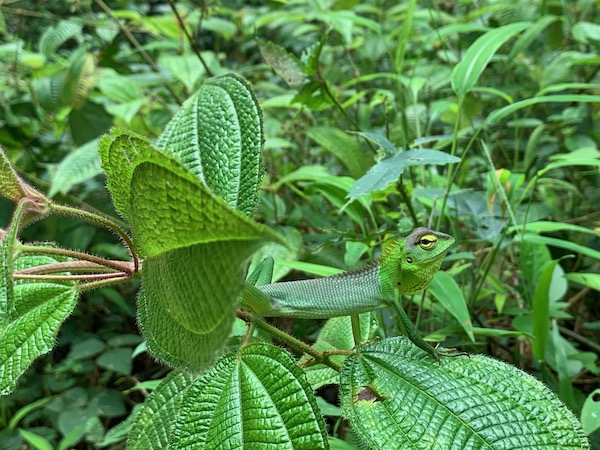
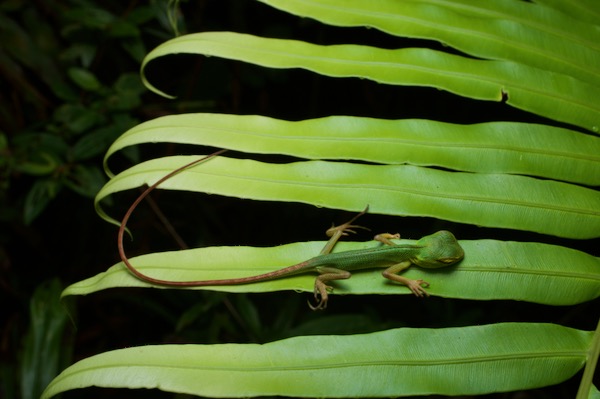
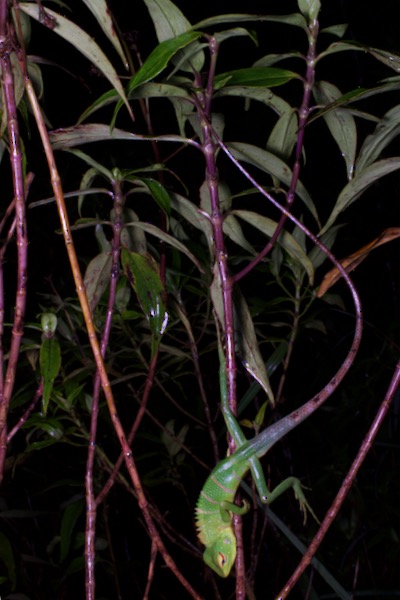
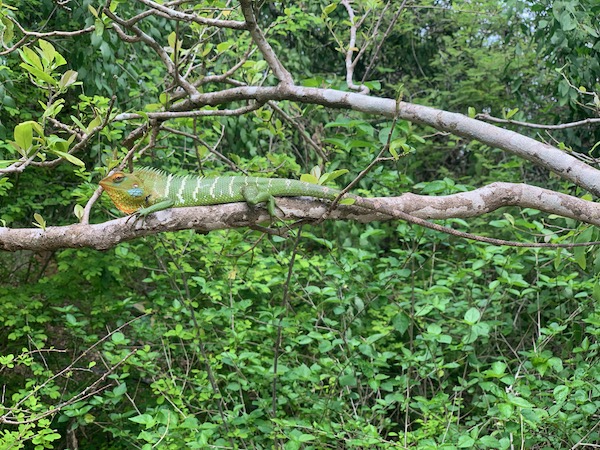
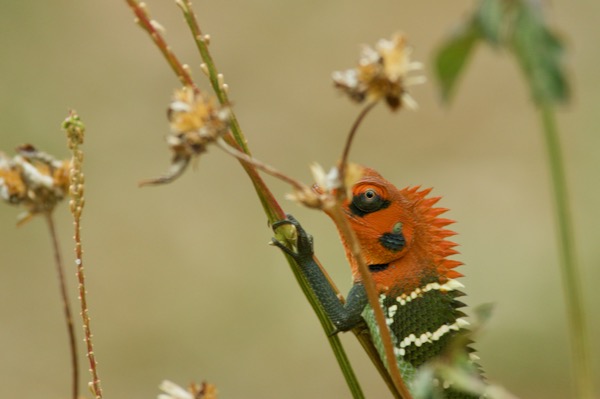
Calotes ceylonensis is called the Painted-lip Lizard for a rather obvious reason: it looks like it has sloppily applied a very thick smear of white lipstick. This species has a large range, but Chanaka told me that they are not easy to find anywhere. Anywhere, that is, except for the one park we went to specifically to find them. We saw a dozen or so in a couple of hours, all perched on tree trunks.
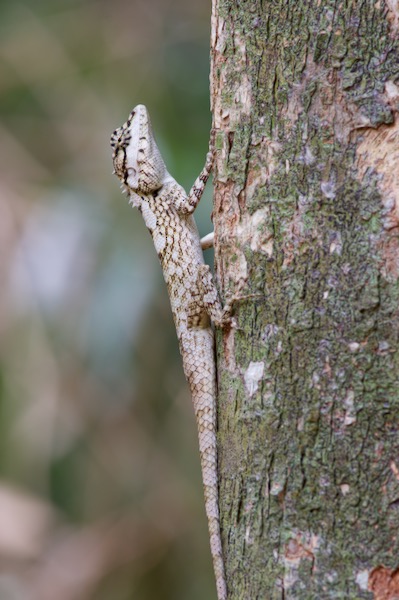
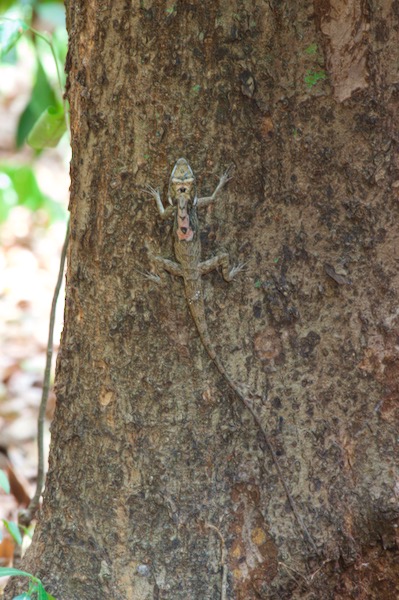
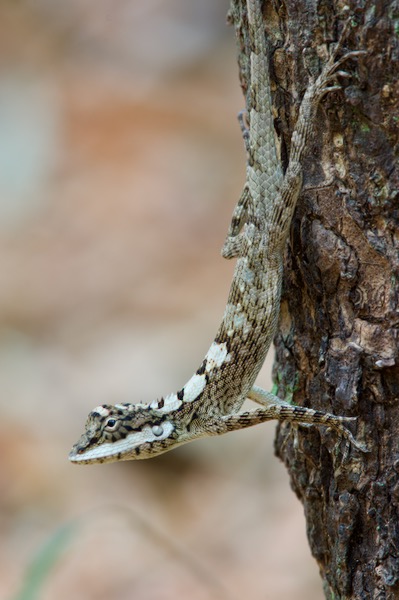
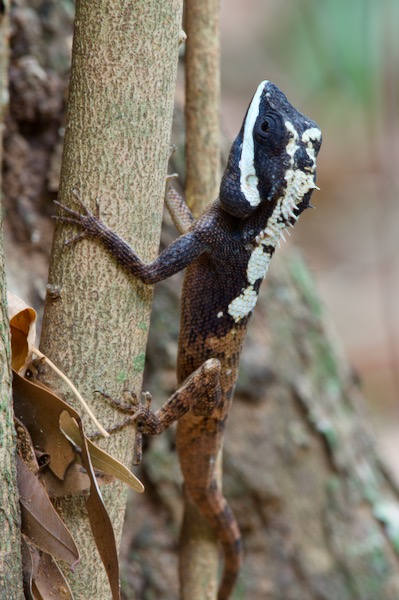
All of the remaining six Sri Lankan Calotes species have spotty or very small ranges, or both. We missed C. liocephalus, C. liolepis, and C. manamedrai, but saw the other three. In all cases, we only found these diurnal lizards sleeping at night.
It's pretty obvious where the Black-cheek Lizard gets its name. We only saw one of these.
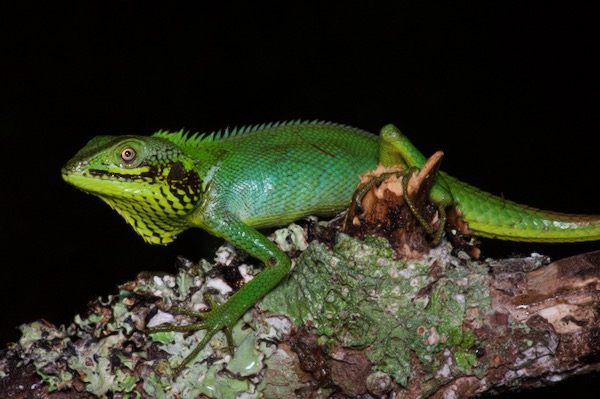
We had better luck with Calotes pethiyagodai, a species described fairly recently (2014). In a couple of nights in their territory, we found 9 or 10.
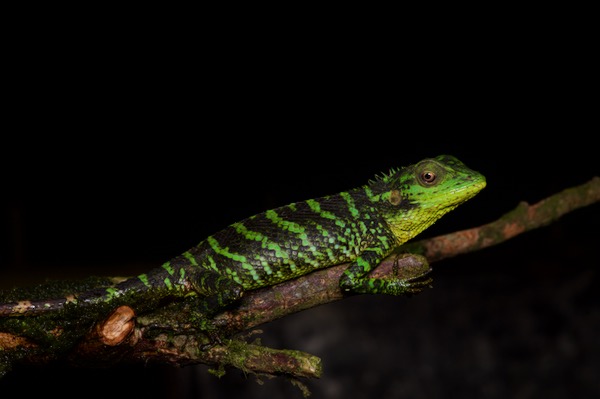
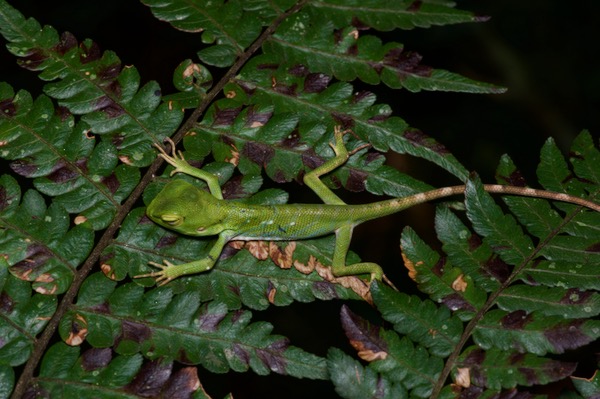
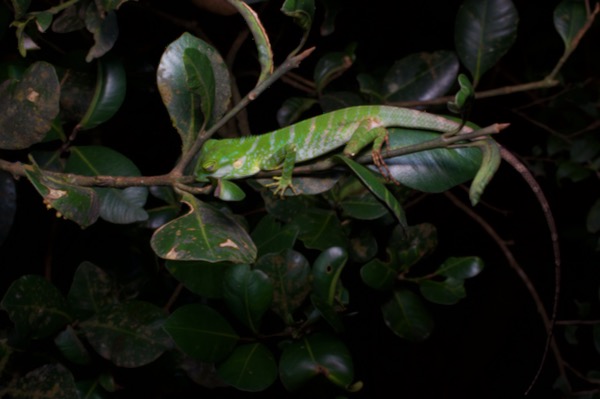
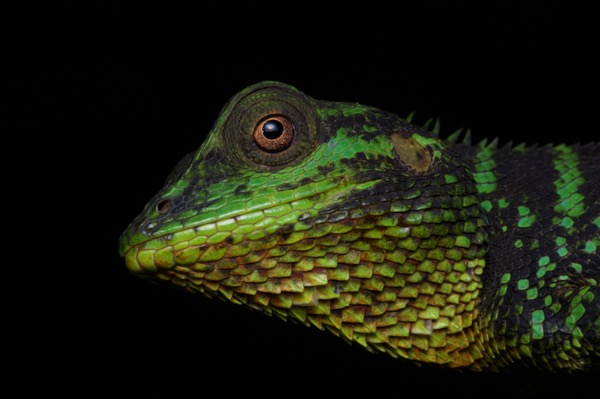
Calotes desilvai has a very tiny known range and we were quite happy to find one adult male and one adult female. Both are displaying stressed coloration, though more so in the male's case. The male is also shedding his skin, which accounts for the low-contrast tail and also the big shoulder-area patch that could be mistaken for a wound.
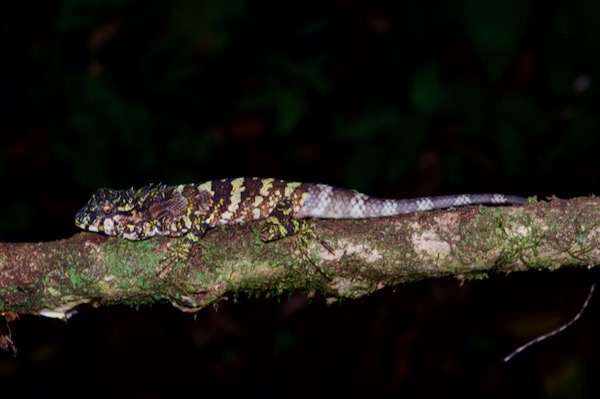
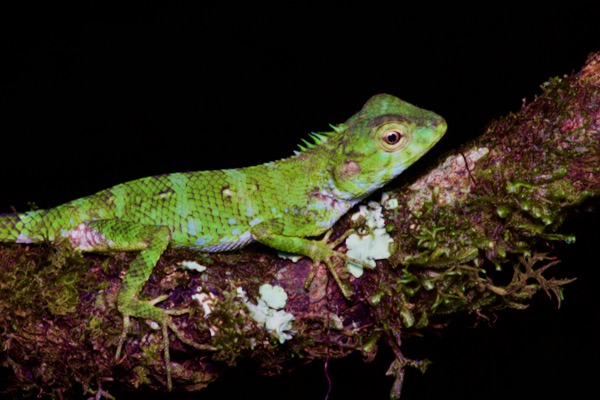
We now come to the three strangest (and therefore best) genera of Sri Lankan agamids. It's hard to decide which of these are the very best, because they are all so very improbable. I will present them here in the arbitrary order of most speciose to least speciose. At least that way I get to use the word "speciose" in a sentence. Twice even!
Ceratophora contains five species, of which we found four. We spent several hours combing through the right habitat for Ceratophora aspera but came up empty. No worries, now I have an excuse to go back some day.
All species of Ceratophora are endemic to Sri Lanka and their capture or export is strictly prohibited. Nonetheless, you can find expensive individuals offered for sale across the internet, which is disturbing.
Let's face the truth: Ceratophora tennentii is a silly lizard. People have speculated since time immemorial (I presume) about the function of its laterally compressed rostral appendage, a.k.a. leaf nose, but nobody's speculation has enough evidence to convince the other speculators. This species lives in one particular mountain range and is classified as Endangered on the IUCN Red List due to destruction and degeneration of its habitat. They can certainly be locally abundant; we saw many on each night that we were in their range.
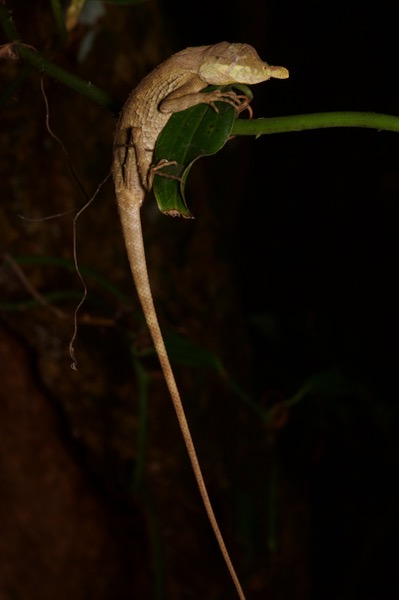
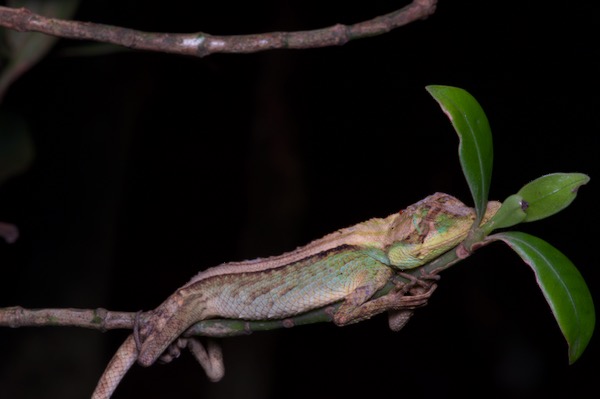
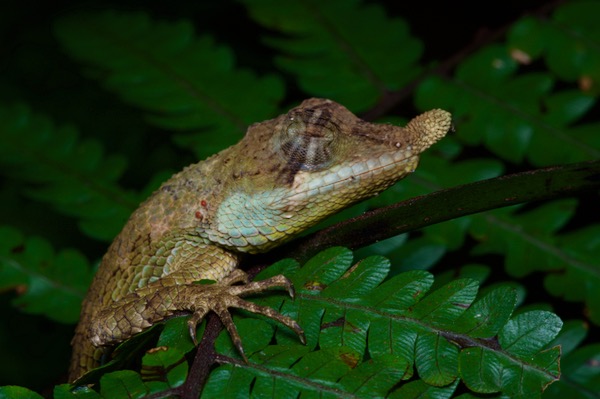
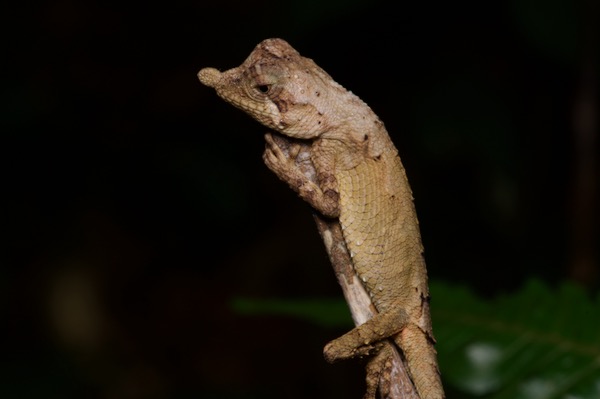
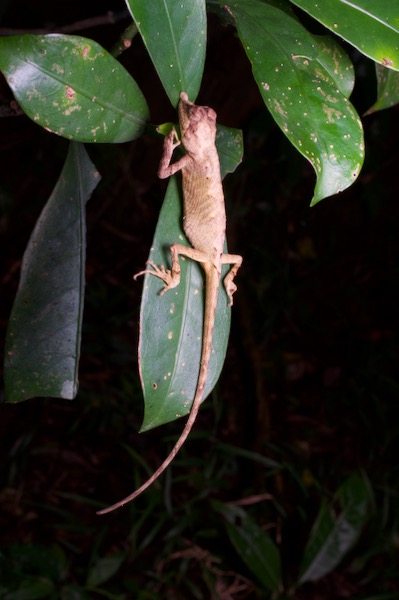
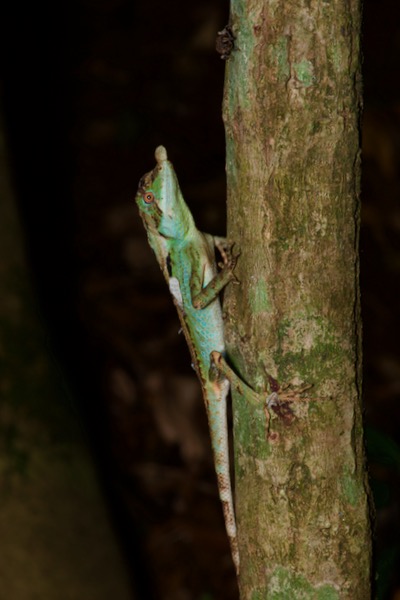
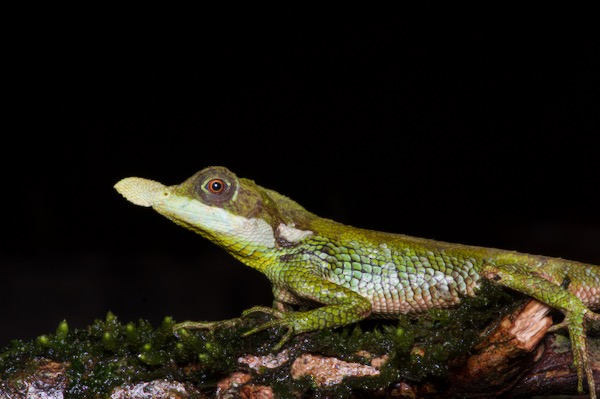
Ceratophora stoddartii is if anything even sillier than Ceratophora tennentii, although I'm sure it thinks of itself as being powerful and frightening. Instead of a flat leaf-shaped nose appendage, it boasts a pointy one. The pointy nose-horns on males are longer and curved. Those on females are shorter and straight. Little babies have no nose-horns at all; they probably can't wait for the day that their oh-so-very-impressive nose-horn begins to sprout, so that they can then spend the rest of their lives trying to figure out what to do with it. Like Ceratophora tennentii, this species is classified as Endangered using the IUCN Red List criteria due to the fragile nature of its remaining habitat, and also like Ceratophora tennentii, it can be locally abundant. We saw more than twenty on a single night in the home garden of a friend of Chanaka named Chamira, and then a few more the next morning.
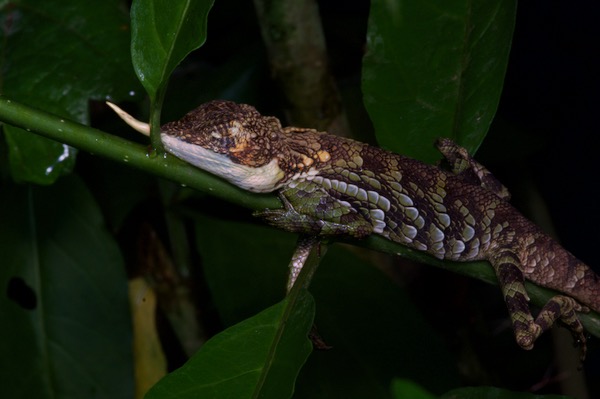
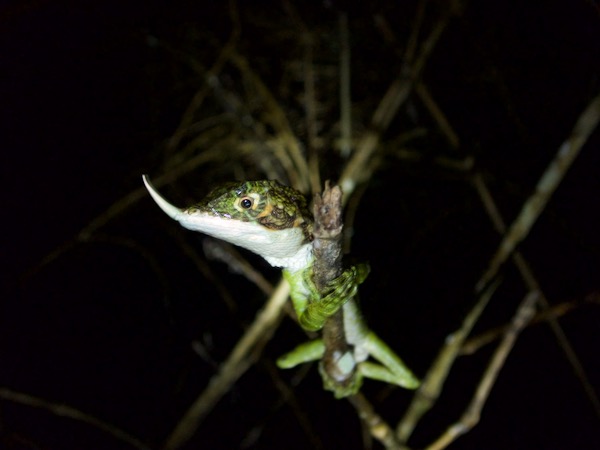
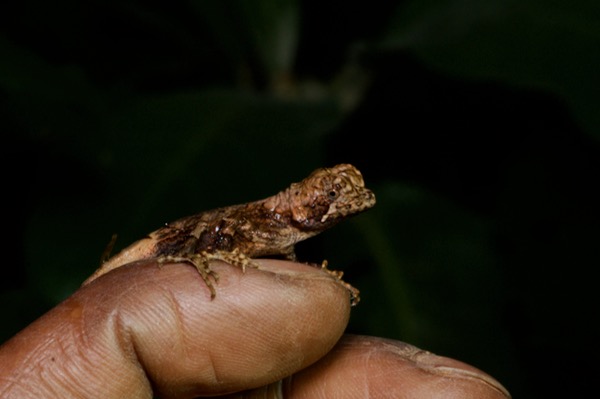
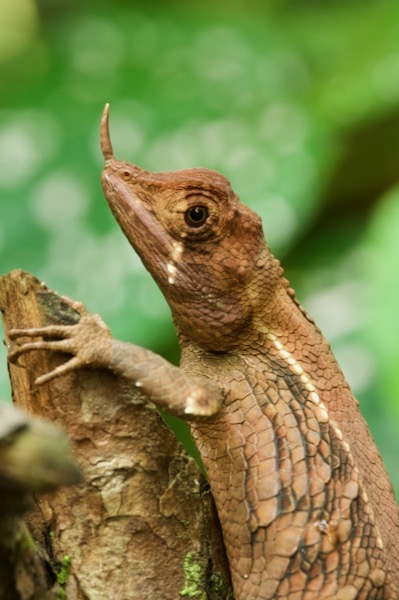
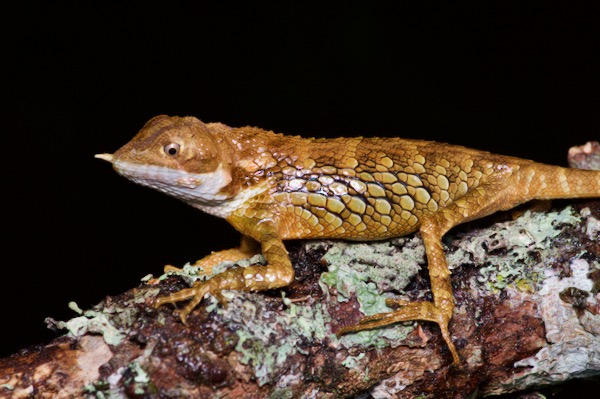
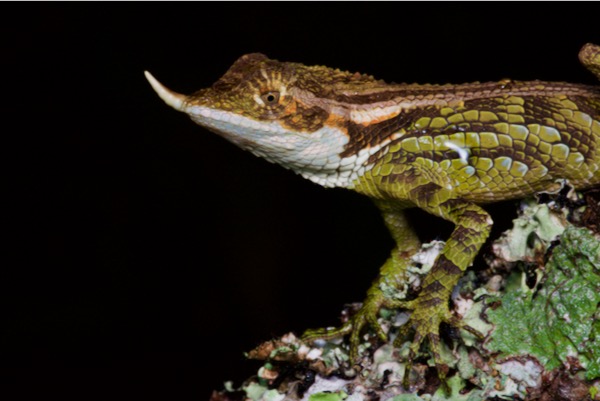
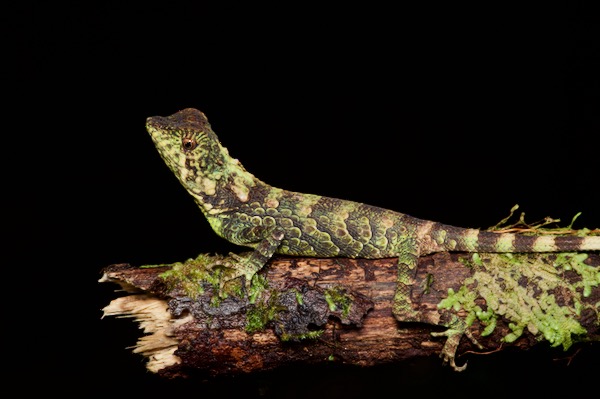
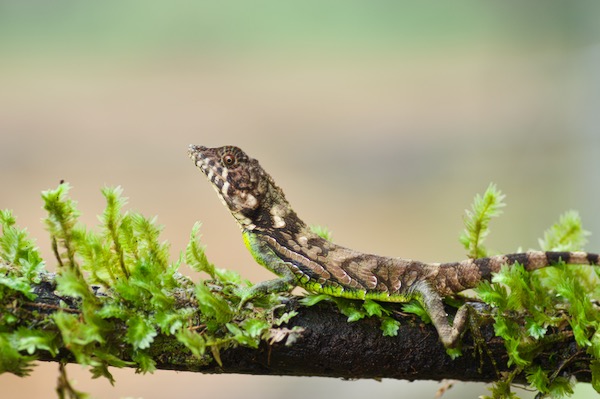
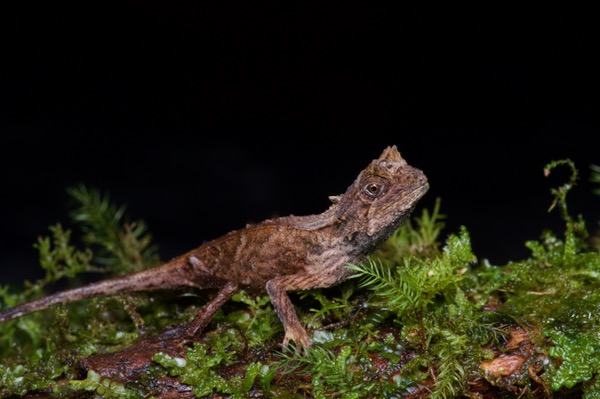
Cophotis is next on the weird-lizards genus countdown. It contains only two species, both endemic to Sri Lanka. One was described in 1861 and the other soon thereafter, where "soon thereafter" in this case means "145 years later". Both species are small (for agamids), arboreal, slow moving, covered with crazily sloppy scales, and in possession of prehensile tails.
Cophotis ceylanica is the original Cophotis, found in various high-elevation forests in the Central Hills of Sri Lanka. I really wanted to see this species, but we had failed to find one before the morning we were due to leave its range. Chanaka's naturalist friend Chamira (he with the home garden full of Rhino-horn Lizards) called around to several of his naturalist friends in the area, and one of them said that he knew where a female one was in his home garden. We detoured in that direction on our way out of town, and by the time we arrived a male had also been found.
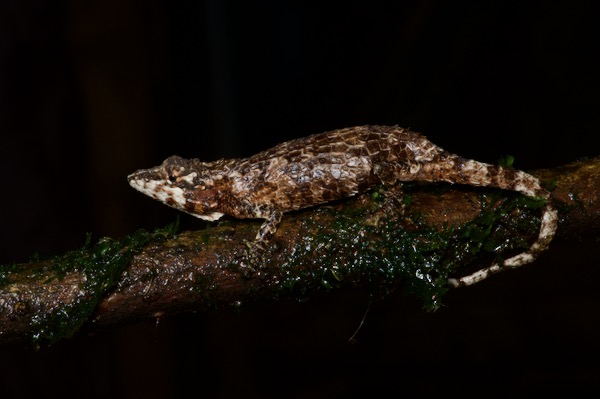
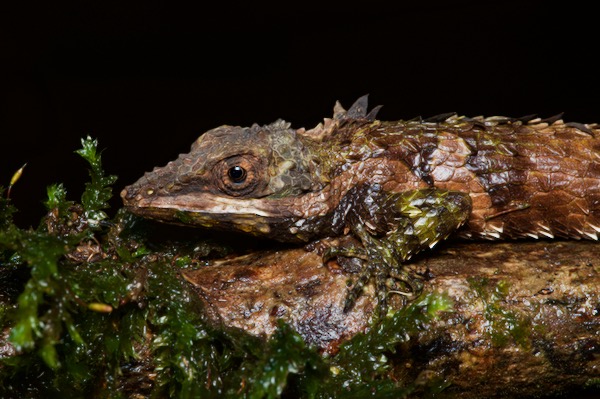
The other species was described in 2006, twice. Two different sets of researchers published papers with a description of this new species, one calling it Cophotis dumbara and the other calling it Cophotis dumbarae. Referees got involved somehow, and the researchers who chose the shorter name won, with the other description ruled invalid. I really need to learn more about this story, because the short form leaves me with all sorts of questions. We found four of these in two nights within their range.
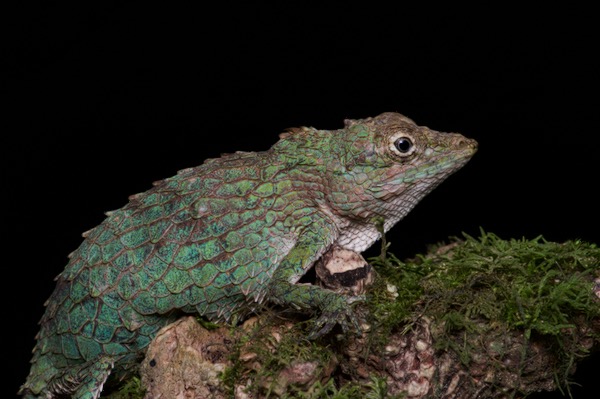
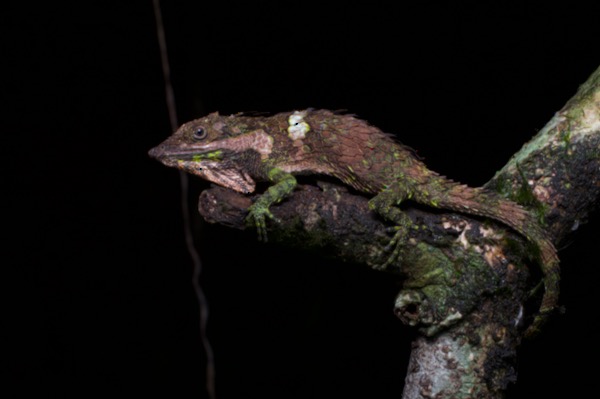
We have now arrived at the final genus of Sri Lankan agamids, Lyriocephalus. This genus contains only one species, the gloriously weird Lyriocephalus scutatus. This arboreal lizard can get quite large, and it has a round bump on its nose contrasted by sharp ridges and some pointy bits elsewhere. At its most striking it sports a bright green head and back, with a white belly, creepy reddish eyes, and a lemon yellow dewlap. The inside of its mouth is cherry red, which it will be happy to demonstrate if you get too close. Sometimes it is pale green instead of bright green, and sometimes it is a woody brown. When disturbed, it can puff up and erect a large crest on its neck while unfurling its impressive dewlap, and will often gape wide as alluded to a couple of sentences ago. It is a lizard of no fixed appearance. I was unbitten by any of the many individuals we found, which I am told is probably for the best.
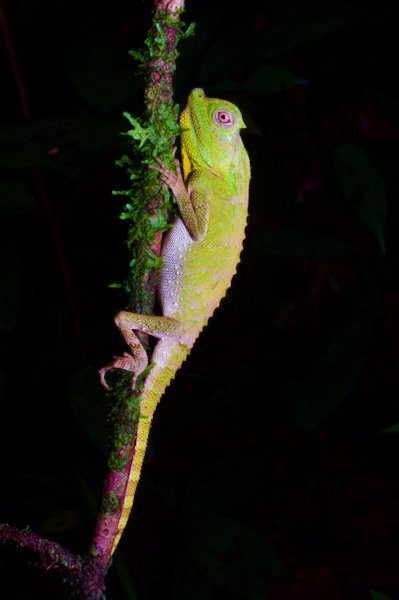
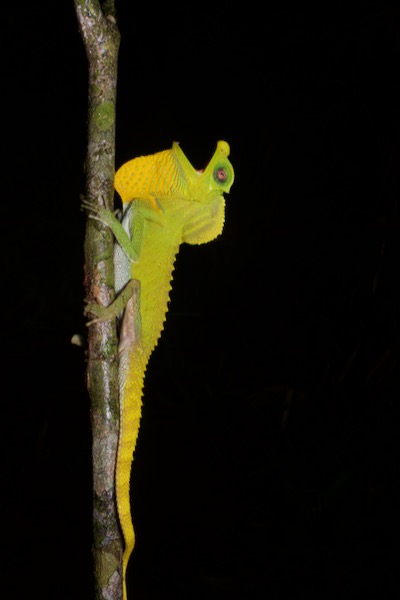
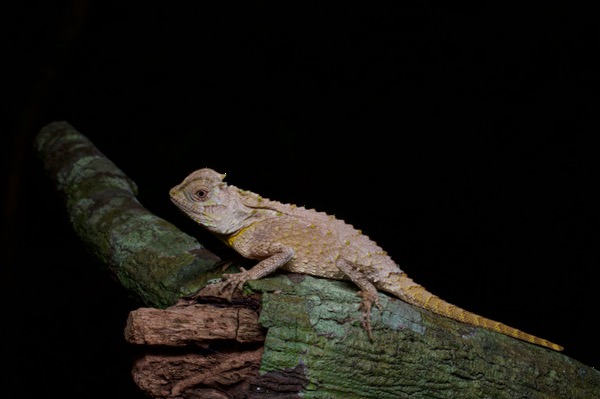
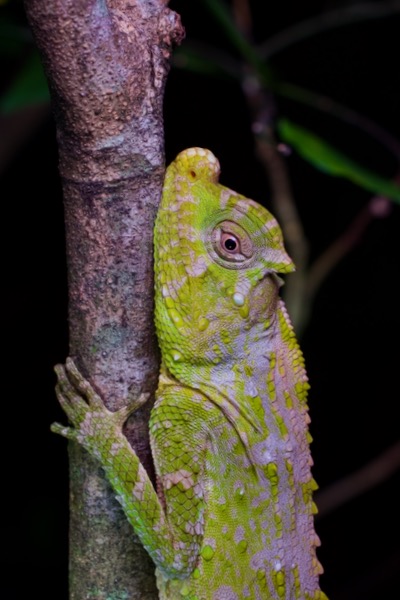
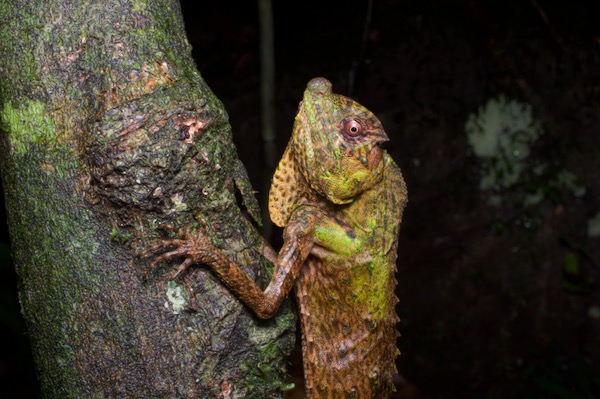
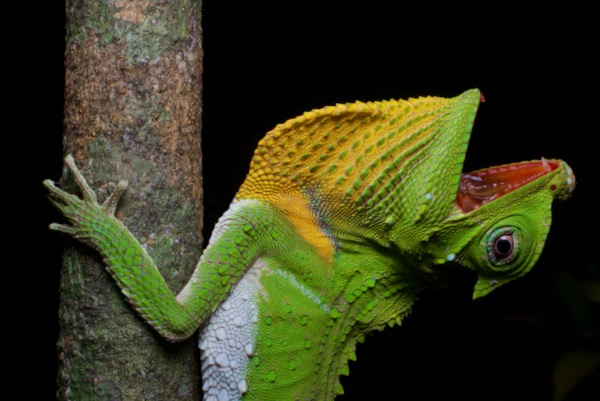
And that my friends is the final weird lizard from this most enjoyable adventure in Sri Lanka. Great credit is due to my guide Udaya Chanaka for choosing the itinerary, making all the arrangements, driving me around the country, making sure that I ate delicious and varied Sri Lankan food (in some cases prepared by himself or his wife), knowing where to look for each species, finding so many wonderful animals, and just in general being an interesting, fun, and knowledgeable companion. Thanks Chanaka!
If you want to follow in my footsteps you can contact him through his Runakanda Rainforest Conservation Center.
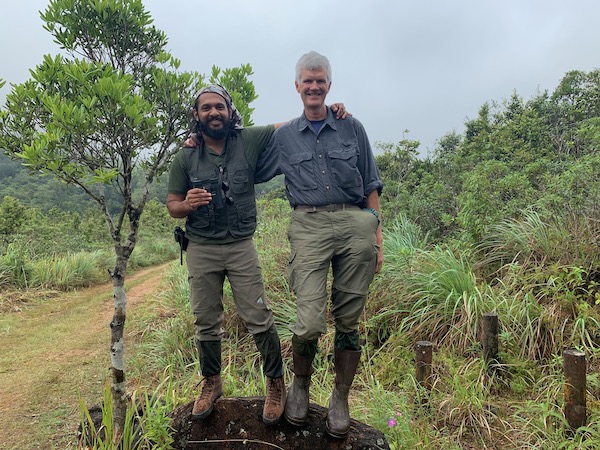
John Sullivan
June 2020